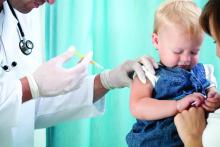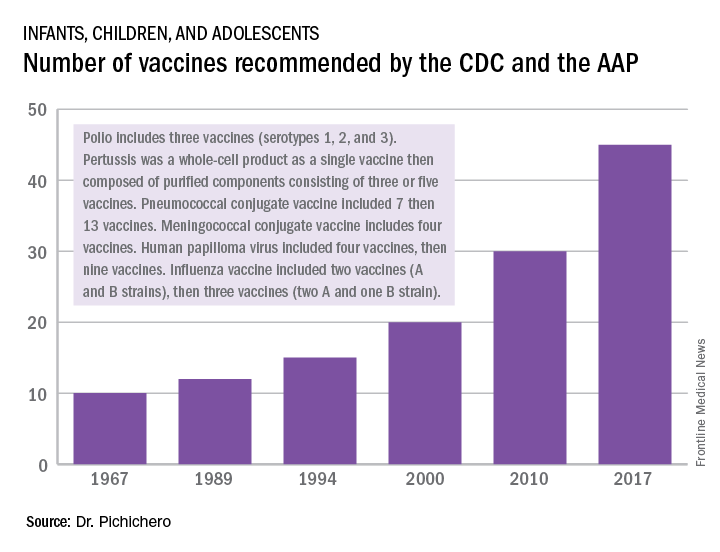In 1967, pediatric patients were vaccinated routinely against eight diseases with 10 vaccines: smallpox; diphtheria; tetanus and pertussis; polio serotypes 1, 2, and 3; measles; rubella; and mumps. Then in 1989, vaccine discovery took a dramatic upward trend. For the physicians and scientists involved in vaccine discovery, the driving force may have been a passion for scientific discovery and a humanitarian motivation, but what drove this major change in pediatric infectious diseases was economics.
In 1989, I was fortunate to be part of the discovery team of the Haemophilus influenzae type b (Hib) polysaccharide and conjugate vaccines developed in Rochester, N.Y. Our team was led by David H. Smith, MD, and Porter Anderson, PhD – who later won the Lasker Prize for the significance of their work. Another team of scientists working at the National Institutes of Health was led by John Robbins, MD, and Rachel Schneerson, MD, where they concurrently developed a Hib conjugate vaccine using a different protein carrier and conjugation technology – they shared the Lasker Prize equally with Dr. Smith and Dr. Anderson.I believe The hiatus of more than 20 years between the introduction of the mumps vaccine in 1967 and that of the Hib vaccine in 1989 in my view was because the economic incentives to develop vaccines were absent. In fact, in the 1970s and early 1980s, vaccine manufacturers were drawing back from making vaccines because they were losing money selling them at a few dollars per dose.
Importantly, when the Hib conjugate vaccine was ready to be released, it had an unprecedented $15 per dose price. What followed was a big surprise to major pharmaceutical and vaccine companies: The Centers for Disease Control and Prevention and the American Academy of Pediatrics endorsed the use of the vaccine as routine. Private insurance companies were obliged to pay for vaccines as part of well-child care, and sales of the product proved profitable.A trailblazing path had been created, and more and more vaccines have been discovered and come to market since then. Combination vaccines and vaccines for adolescents and adults have followed. The biggest blockbuster is Prevnar13 (actually 13 vaccines contained in a single combination), now with annual sales in excess of $7 billion worldwide and growing. Other vaccines with sales of a billion dollars or more are also on the market; anything in excess of $1 billion is considered a blockbuster in the pharmaceutical industry and gets the attention of CEOs (and investors) in a big way.
So now we have multiple large vaccine companies worldwide, and many smaller start-up vaccine companies as well. We have seen the introduction of vaccines in which not only infectious diseases are the target, but also more cancer prevention vaccines are coming to follow hepatitis B and human papillomavirus vaccines. Vaccines for other disease states – including autoimmune diseases, allergies, cardiovascular disease, diabetes, and many others – are in development. To me, this has been the most remarkable achievement of the past 50 years.Dr. Pichichero, a specialist in pediatric infectious diseases, is director of the Research Institute at Rochester (N.Y.) General Hospital. He is also a pediatrician at Legacy Pediatrics in Rochester. He has received funding awarded to his institution for vaccine research from GlaxoSmithKline, Merck, Pfizer, and Sanofi Pasteur. Email him at pdnews@frontlinemedcom.com.




